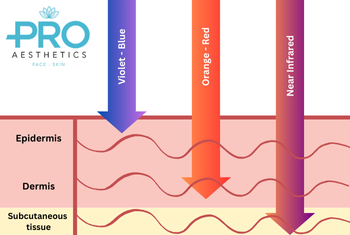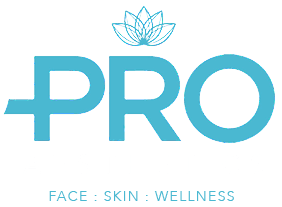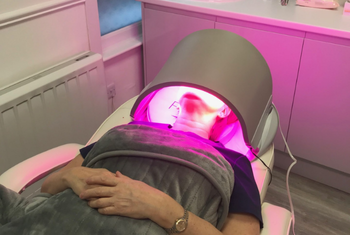What do the different colours of LED Light Therapy do?
LED Light therapy uses different coloured lights to improve the quality of your skin. Whilst this may sound like a sort of disco facial, there is an intriguing science behind how the different coloured lights interact with your skin due to how their energy and wavelengths are emitted and received. Let’s look at what the different colours of LED Light Therapy (or ‘phototherapy’) do for your skin and how they stimulate change on a cellular basis.
A quick introduction to how they work

LED Light Therapy works by introducing coloured light to the skin in close proximity from this mask, which helps to avoid light fraction or dilution. You can choose from 3 different colours or ‘modes’ which all treat different concerns: red light, blue light, and combination.
Why does the treatment use coloured light?
LED (light emitting diodes) bulbs used in the treatment are nonthermal and noninvasive, meaning they do not give off any heat and we don’t need to break the skin for this treatment to be effective. The light used is coloured light and is entirely different to sunlight as there is no ultraviolet radiation, so it does not carry the same risk of sun damaged skin. It is safe, yet remarkable.
Different coloured lights have different wavelengths measured in nanometres (nm). Violet, indigo, and blue light have the shortest wavelengths, meaning the waves are packed tighter together at shorter intervals of 400-470nm. On the other end of the visible light spectrum, yellow, orange, and red light have the longest wavelengths at 660-665nm.
How does LED Light Therapy work?
So, let’s get technical and breakdown exactly how light therapy works on a scientific, cellular level. The colour of the light is changed by wavelength, and the different wavelengths of the colour penetrate the skin at different depths.
Blue light LED therapy penetrates the epidermis, or your outer most layer of skin. It is therefore best suited to treat surface-level skin imperfections and reduce the amount of acne-causing bacteria on the skin. This can help to detox the skin should it feel congested, oily, or irritated.

Red light LED therapy penetrates deeper than blue wavelengths, to the deeper layer of the skin called the dermis. The light energy reaching this layer of the skin stimulates the production of collagen and skin cell creation. This means it is best suited to reduce inflammation and to with creating the proteins that keep our skin looking and feeling younger. It’s been shown this treatment is successful in reducing acne, psoriasis, skin irritation, and even rosacea.
Near-infrared LED therapy, or what we call ‘combination’ light therapy, Is able to penetrate deeper still than the dermis. Reaching as far as your subcutaneous layers in your skin. This is where the treatment becomes even more impressive. NIR Therapy energises your cells and encourages blood vessel dilation to increase blood flow to areas of inflammation or injury. Studies have shown that near-infrared LED therapy is successful in aiding the healing of wounds and injuries, with many athletes and Olympians utilising the treatment for different parts of their body.
Safety, comfort, and considerations

Is LED Light Therapy painful?
No; they’re very relaxing and no discomfort should be felt at all. Light facials are performed under therapeutic appointments – it’s not uncommon for clients to fall asleep! The treatment uses a mask that sits above and around your face, and the inside face is lined with LED bulbs. The client lies beneath the mask that bridges over the head in a semi-circle or rainbow arc, protective glasses are placed over the eyes, and then the treatment begins.
Is LED Light Therapy safe?
LED Light Therapy is perfectly safe. The light used is nonthermal and noninvasive, as aforementioned, so it does not produce heat and we do not need to cut the skin at any point. There are no harmful UV rays like those in sunlight. The only contraindications that a person shouldn’t receive a full light therapy session are considerations like photosensitive skin. For example, some medications can make the skin more sensitive to light, and therefore would render the client unable to receive a full treatment duration. This is something we can talk you through at your initial consultation as we ask you questions about your skin type and concerns.
What is Pro Aesthetics’ chosen device for light therapy?
At our West Bridgford skin clinic, we use the DermaLux Flex MD, the most powerful portable LED system in the world. It is an industry-leading piece of technology which we’re proud to offer to our clients. Because it fits over the head of a client lying down, we will ask you to lie on our clinical couch and place it over your face. Before treatment begins, we will place a soothing weighted blanket on you so you don’t feel cold whilst you relax underneath the light. This is why, as we hinted earlier, you may fall asleep…
Non-surgical and non-invasive medical aesthetics are at passion at Pro Aesthetics in Nottingham, and we only provide quality treatments we believe in ourselves. Book your initial consultation with us online or call the clinic to speak with a member of our team today.

